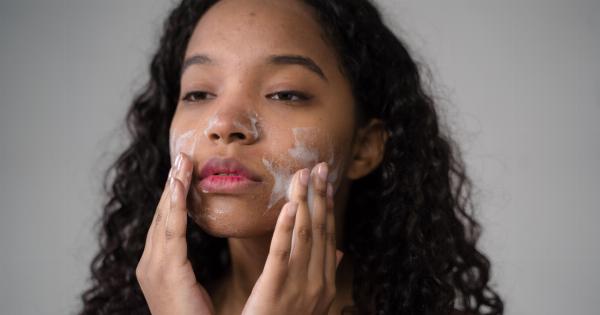Stretch marks, also known as striae, are a common skin condition that affects both men and women. They often appear as indented streaks on the skin, usually red or purple in color.
Stretch marks occur when the skin stretches or shrinks rapidly, causing the collagen and elastin fibers in the dermis to tear.
While stretch marks are generally harmless, they can be a source of self-consciousness and discomfort for many individuals. They commonly occur during periods of rapid growth such as puberty, pregnancy, or significant weight gain or loss.
Stretch marks can appear on various parts of the body, including the abdomen, thighs, hips, breasts, and upper arms.
The Struggle to Treat Stretch Marks
Over the years, numerous treatments and remedies have been proposed to reduce the visibility of stretch marks. However, most of these approaches — including creams, oils, and home remedies — have yielded limited success.
This is primarily because these treatments only address the superficial layers of the skin, unable to reach the underlying structural damage.
To truly tackle stretch marks, a treatment option needs to stimulate collagen production and promote the remodeling of damaged skin layers. Until recently, no treatment had proven consistently effective in achieving these goals.
Introducing Laser Technology for Stretch Marks
Groundbreaking advancements in laser technology have revolutionized the treatment of stretch marks. Lasers work by emitting concentrated beams of light that target specific areas of the skin.
When applied to stretch marks, lasers help stimulate the production of collagen and elastin, encouraging the skin to heal and regenerate.
Laser treatments for stretch marks have proven to be highly successful, providing noticeable improvements in both the appearance and texture of the skin.
The procedure is non-invasive, virtually painless, and does not require any downtime, making it an attractive option for those seeking a convenient and effective solution for their stretch marks.
How Laser Treatment Works
During a laser stretch mark treatment session, a dermatologist or skincare professional will use a specific type of laser that emits pulses of light onto the affected area.
The laser energy is absorbed by the pigments in the stretch marks, which in turn stimulates collagen production and remodeling of the damaged skin.
The process is relatively quick, with most laser sessions lasting between 20 to 30 minutes, depending on the size of the treatment area.
The number of sessions required for optimal results may vary depending on the severity of the stretch marks and individual responses to the treatment.
Benefits of Laser Treatment for Stretch Marks
Laser treatment offers several advantages over traditional treatments for stretch marks:.
- Laser technology can penetrate deep into the skin, reaching the underlying layers that are responsible for the development of stretch marks.
- Pulses of laser energy stimulate collagen production, which helps to rebuild and strengthen the skin structure.
- The remodeling of damaged skin results in smoother, more even-toned skin, with a significant reduction in the appearance of stretch marks.
- Laser treatment is safe and well-tolerated, with minimal side effects and no downtime required.
- The procedure is precise, allowing healthcare professionals to target specific areas of concern with accuracy.
What to Expect During and After Laser Treatment
Before undergoing laser treatment, it is essential to consult with a dermatologist or a healthcare professional who specializes in skin rejuvenation.
They will evaluate the severity of your stretch marks and determine the most suitable laser treatment approach for you.
During the laser session, you may experience a sensation similar to the snapping of a rubber band against your skin. However, discomfort is typically minimal and can be mitigated by applying a cooling gel or using a topical anesthetic.
Immediately after the treatment, you may notice some redness or mild swelling in the treated area. However, these effects are temporary and should subside within a few hours.
Most individuals can resume their regular activities immediately after the session.
For optimal results, multiple laser treatment sessions are usually recommended, spaced a few weeks apart. This allows time for the skin to heal and regenerate in between sessions.
Post-Treatment Care
Following laser treatment, it is crucial to take good care of your skin to optimize the healing process and maintain the results. The following post-treatment guidelines are generally recommended:.
- Avoid exposure to direct sunlight and use broad-spectrum sunscreen with a high SPF to protect the treated area.
- Keep the treated area clean and moisturized to promote healing and prevent dryness.
- Avoid picking or scratching the treated area to reduce the risk of infection and scarring.
- Avoid strenuous exercise or activities that may cause excessive sweating or friction on the treated area.
- Follow all the instructions provided by your dermatologist or healthcare professional for the best results.
Choosing a Qualified Professional
When considering laser treatment for stretch marks, it is crucial to choose a qualified dermatologist or skincare professional experienced in performing such procedures.
Look for professionals who have a proven track record and access to state-of-the-art laser technology.
Read reviews and testimonials from previous patients to gain insight into their experiences and results.
Be sure to ask questions during your consultation to ensure you have a full understanding of the procedure, potential risks, expected outcomes, and aftercare instructions.
Stretch Marks Prevention Tips
While laser technology has revolutionized the treatment of stretch marks, prevention remains the most effective strategy. Although not all stretch marks can be avoided, following these tips may help reduce their severity:.
- Moisturize your skin regularly to enhance its elasticity and prevent excessive stretching.
- Gradually gain or lose weight to prevent sudden changes that can stress your skin.
- During pregnancy, maintain a healthy weight gain and use specialized creams or oils recommended by your healthcare professional.
- Stay hydrated to improve the overall health and resilience of your skin.
- Incorporate a balanced diet rich in vitamins A, C, and E, as well as zinc and silica, to support healthy skin cell formation.
Conclusion: Embrace the Laser Solution
The advent of groundbreaking laser technology has ushered in a new era for the treatment of stretch marks.
With its ability to stimulate collagen production and promote the healing and remodeling of damaged skin, laser treatment offers a highly effective solution for those seeking to reduce the visibility of stretch marks.
If you are bothered by stretch marks and desire smoother, more even-toned skin, laser treatment may be the answer you’ve been looking for.
Consult with a qualified dermatologist or skincare professional to discuss whether laser treatment is suitable for you and embark on your journey towards regaining skin confidence.



























